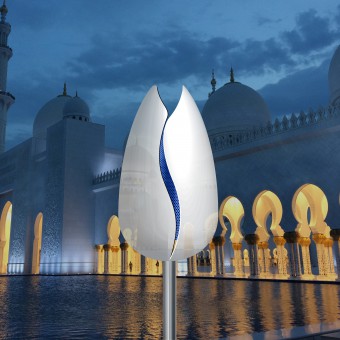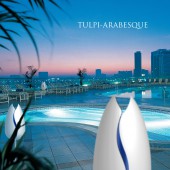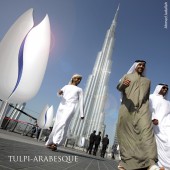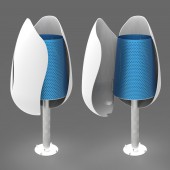
| THE AWARD |
| CATEGORIES |
| REGISTRATION |
| SUBMIT YOUR WORK |
| ENTRY INSTRUCTIONS |
| TERMS & CONDITIONS |
| PUBLICATIONS |
| DATES & FEES |
| METHODOLOGY |
| CONTACT |
| WINNERS |
| PRESS ROOM |
| GET INVOLVED |
| DESIGN PRIZE |
| DESIGN STORE |
| THE AWARD | JURY | CATEGORIES | REGISTRATION | PRESS | WINNERS | PUBLICATIONS | ENTRY INSTRUCTIONS |
Tulpi Arabesque Waste Bin by Marco Manders |
Home > Winners > Design #56396 >Interview |
 |
|
FS: What is the main principle, idea and inspiration behind your design?
MM: Everyone knows tulips. They are the jewels amongst our flowers, a great joy to many of us. A typical Dutch icon. Tulips are a great inspiration to many artists and designers, including me.
FS: What has been your main focus in designing this work? Especially what did you want to achieve?
MM: With its slim, cheerful and eye-catching appearance Tulpi-Arabesque creates an atmosphere that will encourage people to actually have fun throwing away their garbage.
FS: What are your future plans for this award winning design?
MM: We will produce the Tulpi-Arabesque by ourself and we will focus our sales and marketing on the countries in the Middle East.
FS: How long did it take you to design this particular concept?
MM: It took 3 months to design this concept and it took 2 weeks to engineer it.
FS: Why did you design this particular concept? Was this design commissioned or did you decide to pursuit an inspiration?
MM: Tulpi-Arabesque is a new addition to the Tulpi product line inspired by the Tulip. It is based on the Tulpi-Bin. But after visiting a couple of times the United Arabic Emirates, I decided to customize the Tulpi-Bin to a more specific arabic design.
FS: Is your design being produced or used by another company, or do you plan to sell or lease the production rights or do you intent to produce your work yourself?
MM: I plan to produce the Tulpi-Arabesque myself?
FS: What made you design this particular type of work?
MM: I am very interested in our environment, especially in our cities. The public space, how it is arranged and its effect on people.
FS: Where there any other designs and/or designers that helped the influence the design of your work?
MM: No other designers
FS: Who is the target customer for his design?
MM: Goverment Property developers
FS: What sets this design apart from other similar or resembling concepts?
MM: It has an organic shape with a touch of ‘Thousand and one nights’. Eye-catching round and slender form.
FS: How did you come up with the name for this design? What does it mean?
MM: The designs looks like a Tulip, and back then it was a trend to introduce names with an i (iTunes, iPhone) but instead of naming my design iTulip, I decided to name it “Tulpi”. Arabesques are a fundamental element of Islamic art. I combinated these two words.
FS: Which design tools did you use when you were working on this project?
MM: Pencil and paper Illustrator Photoshop Solidworks
FS: What is the most unique aspect of your design?
MM: The shape and the ‘transparency’ to see if the inner tray is full or to check what is inside (security)
FS: Who did you collaborate with for this design? Did you work with people with technical / specialized skills?
MM: I worked together with Wilber Hak (engineer)
FS: What is the role of technology in this particular design?
MM: To empty the bin, unlock one of the two petals for easy access to the removable inner tray. Also an optional full electronic opening and closure system is available.
FS: Is your design influenced by data or analytical research in any way? What kind of research did you conduct for making this design?
MM: Non
FS: What are some of the challenges you faced during the design/realization of your concept?
MM: While designing Tulpi-Arabesque, of course the shape of a tulip had to stay. But also the engineering and the perfect closing of the petals were a real challenge to accomplish.
FS: How did you decide to submit your design to an international design competition?
MM: I want to try to become a respected designer for street furniture. By participating in design competitions, I would ‘measure up’ to other designers.
FS: What did you learn or how did you improve yourself during the designing of this work?
MM: My understanding of engineering grew enormously while designing Tulpi-Arabesque. As did my knowledge of materials like steel and plastics and skills like engineering and manufacturing processes like Sheet Moulding Compound (SMC).
FS: Any other things you would like to cover that have not been covered in these questions?
MM: No
FS: Thank you for providing us with this opportunity to interview you.
A' Design Award and Competitions grants rights to press members and bloggers to use parts of this interview. This interview is provided as it is; DesignPRWire and A' Design Award and Competitions cannot be held responsible for the answers given by participating designers.
| SOCIAL |
| + Add to Likes / Favorites | Send to My Email | Comment | View Press-Release |




